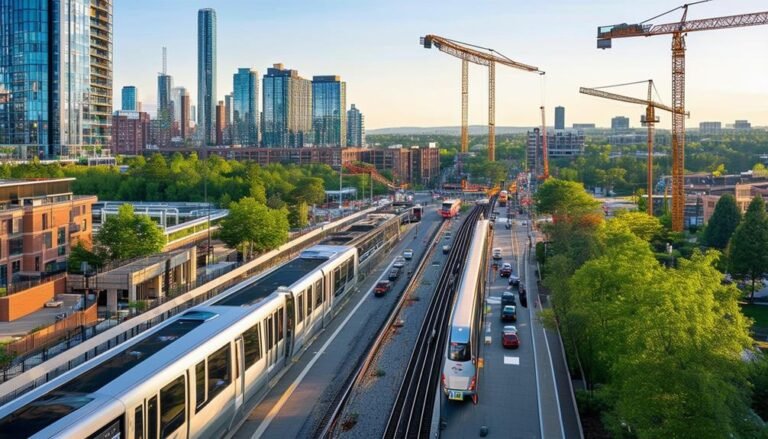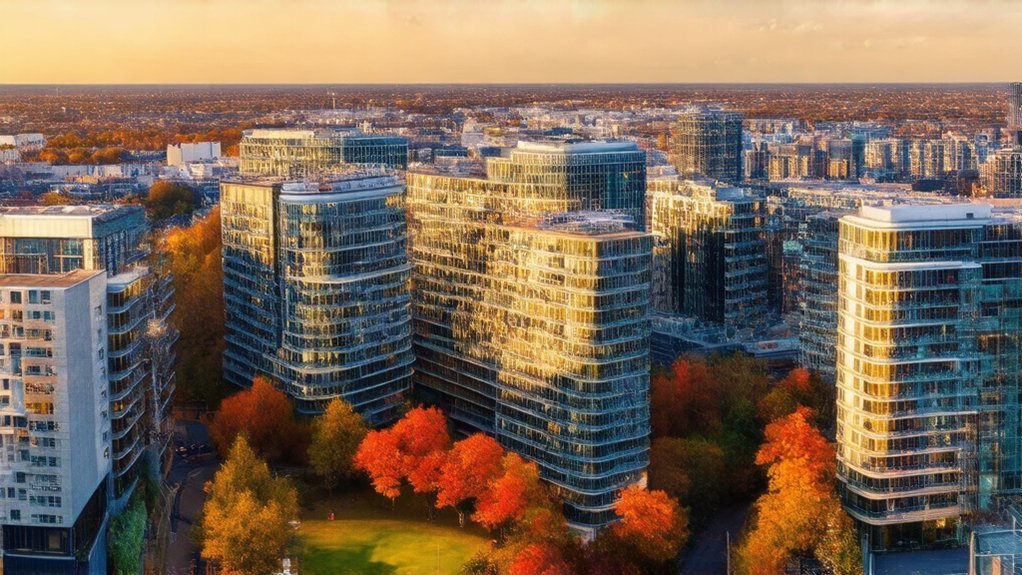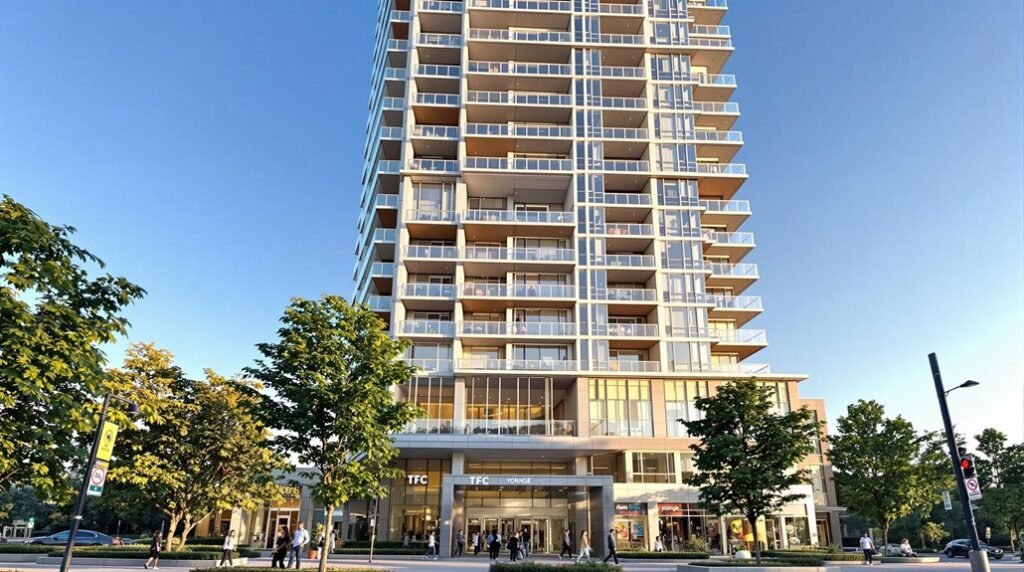NIMBYism is throwing a wrench in GTA real estate development, and investors need to be savvy. I’ve seen how local opposition can stretch timelines, inflate costs, and even scare off developers. It’s like trying to build a sandcastle while the tide’s coming in! Community engagement is key – developers who listen and collaborate tend to fare better. But navigating regulations? That’s a whole other ball game. Zoning approvals and permits can be a bureaucratic nightmare, costing big bucks and precious time. While there are risks, the high demand for housing presents opportunities for those who can weather the NIMBY storm. Stick around, and I’ll break it down further.
Key Takeaways
- NIMBYism significantly delays development timelines, increasing costs and potentially deterring investment in affected neighborhoods.
- Community opposition can lead to project modifications or cancellations, introducing uncertainty for investors.
- Transparent communication and community engagement strategies are crucial for mitigating NIMBY-related risks.
- Navigating complex zoning approvals and regulatory challenges adds financial strain and time to development projects.
Understanding NIMBYism in the GTA
In the GTA, NIMBYism‘s a major hurdle for housing development, with over half of Canadians seeing it as a roadblock to affordable homes. Let me break it down for you:
NIMBYism, or “Not In My Backyard” sentiment, is when local residents oppose new developments in their neighborhood. It’s like when your little sister doesn’t want you to rearrange the furniture in the shared playroom – she likes things just as they are!
Here’s what NIMBYs in the GTA often worry about:
- Property values dropping
- Increased traffic congestion
Take the Stouffville case, for example. A proposal for 60 stacked townhouses faced fierce opposition from locals. It’s like they were saying, “New homes? Great idea! Just… not here, please.”
Now, here’s the kicker: it’s often wealthier residents leading the charge against new developments. They’ve got more time, money, and influence to make their voices heard. It’s a bit like having the popular kids in school deciding what everyone gets for lunch – not always fair, right?
But there’s hope on the horizon! Public opinion is shifting. More people are realizing we need more housing to tackle those sky-high real estate prices. It’s like we’re all finally agreeing that we need a bigger pizza because everyone’s still hungry.
To combat NIMBYism, we’re seeing some interesting moves:
- Relaxing zoning restrictions
These changes could help us build the homes we need, making the GTA a more affordable place for everyone. After all, a rising tide lifts all boats – or in this case, all houses!
Effects on Development Timelines
Time’s the name of the game when it comes to NIMBYism‘s impact on real estate development in the GTA. I’ve seen firsthand how local opposition can turn a simple project into a drawn-out saga. It’s like watching paint dry, but with more paperwork!
Here’s the scoop on how NIMBYism affects development timelines:
- Prolonged approval processes: Community resistance often leads to extended public consultations and zoning approvals. These can drag on for years, turning what should be a sprint into a marathon.
- Increased costs: Developers face a double whammy of time and money. Legal challenges and extra community engagement efforts can seriously inflate project budgets.
Let me give you a real-world example: In East Vancouver, a proposal got stuck in zoning approval limbo for three whole years due to NIMBY sentiments. That’s longer than it takes to get a college degree!
It’s not just my opinion, either. A survey found that over 70% of developers cited community opposition as a major factor in project delays. That’s a lot of frustrated builders!
The takeaway? NIMBYism isn’t just a minor bump in the road for GTA real estate development. It’s more like a series of speed bumps, detours, and roadblocks that can significantly extend project timelines and impact the housing market. As an investor, it’s crucial to factor in these potential delays when considering development opportunities in the area.
Community Engagement Strategies
Tackling NIMBYism head-on requires developers to master the art of community engagement. I’ve seen firsthand how personalized outreach can make a world of difference in building support for new housing projects. Picture this: instead of faceless corporations swooping in with grand plans, we’re talking about developers going door-to-door, chatting with residents, and hosting public meetings. It’s like turning a potential battleground into a friendly neighborhood barbecue!
But here’s the secret sauce: involving everyone, especially those who often don’t get a seat at the table. Renters, young people, and other underrepresented groups can bring fresh perspectives that shape more inclusive developments. It’s like adding new ingredients to a recipe – suddenly, you’ve got a dish that everyone wants to try!
So, what’s the winning formula for community engagement? Here’s my quick-and-dirty guide:
- Get transparent: Share plans openly to ease fears about property values and local services
- Collaborate: Encourage dialogue between residents and developers
- Build relationships: Work closely with local resident associations
Navigating Regulatory Challenges
While community engagement is key, developers in the GTA face a labyrinth of regulatory hurdles that can make or break a project’s success. I’ve seen firsthand how these challenges can turn a promising development into a bureaucratic nightmare. Let’s dive into the nitty-gritty of navigating these choppy waters.
First off, zoning approvals are like a game of Snakes and Ladders – one wrong move, and you’re sliding back to square one. It’s not uncommon for developers to face delays of up to three years due to local opposition and municipal red tape. Imagine waiting that long just to break ground!
Then there’s the matter of permits. These little pieces of paper come with a hefty price tag – we’re talking over $1 million in some cases. That’s enough to make any developer’s wallet weep. And with high-interest rates nipping at our heels, every day of delay is like watching money evaporate into thin air.
To make matters worse, municipalities are tightening their belts with stricter bylaws and regulations. It’s like trying to thread a needle while wearing oven mitts – frustrating and time-consuming. Here’s a quick breakdown of the challenges:
- Lengthy zoning approval processes
- Sky-high permit costs
- High-interest rates increasing financial pressure
Investment Risks and Opportunities
In the face of NIMBYism, investing in GTA real estate development’s a high-stakes game of risk and reward. I’ve seen firsthand how local opposition can throw a wrench in the works, causing delays that eat into profits faster than a hungry beaver through wood. But don’t let that scare you off – there’s gold in them thar hills for savvy investors who know how to navigate the choppy waters of community sentiment.
Let’s break it down:
Risks:
- Prolonged approval processes (hello, holding costs!)
- Uncertainty due to local opposition
Opportunities:
- High demand for diverse housing options
- Affordable housing market ripe for development
Here’s the deal: with over 250,000 folks on affordable housing waiting lists, there’s a clear need for more homes. It’s like a giant game of Tetris, and we need to fit in those housing blocks where we can. Smart investors are looking at:
- Multi-family units
- Affordable housing developments
- Localized REITs
Speaking of Ottawa’s average single-family home price hitting $721,600, it’s clear as day that affordability’s a hot-button issue. This crisis is actually creating opportunities for those willing to think outside the box.
My advice? Keep an eye on shifting public sentiment. As more people realize we need new housing like we need air to breathe, the tide’s turning in favor of development. Investors who can read these changes and adapt quickly might just find themselves sitting pretty in the evolving GTA real estate landscape.
Conclusion
As I’ve explored the impact of NIMBYism on GTA real estate development, I’ve come to realize it’s a complex issue with no easy solutions. Investors need to be prepared for longer timelines, increased costs, and potential project modifications. However, with the right approach to community engagement and a thorough understanding of regulatory challenges, opportunities still abound. Like the telegraph operators of yore, we must adapt to changing communication landscapes. By staying informed and flexible, savvy investors can navigate these choppy waters and find success in the GTA’s dynamic real estate market.


















